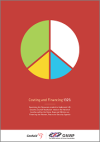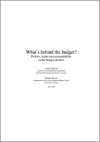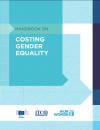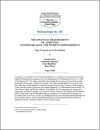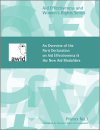FUNDAR 54
Examining the resources needed to implement Security Council Resolution 1325 at national level as well as the gains, gaps and glitches of financing the women peace and security agenda. Over the last decade the policy environment on women, peace and security has gained significant momentum.
Paper discussing the definition and measurement of Sustainable Development Goal (SDG) Indicator 5.c.1. (reclassified to Tier II) and comparing Indicator 5.c.1 with other SDG fiscal indicators.
Using country-level data, the paper estimates the costs of interventions aimed at promoting gender equality and women's empowerment in Bangladesh, Cambodia, Ghana, Tanzania, and Uganda. It then uses these estimates to calculate the costs of such interventions in other low-income countries.
The Handbook is a comprehensive, step-by-step guide to costing gender equality priorities.
The paper provides a comprehensive overview and guide to complex issue of linkages between aid and gender equality.
The EC/UN Partnership has reviewed the extent to which commitments to women's security and peacebuilding needs have been financed by Official Development Assistance (ODA) in four different post-conflict situations: the Democratic Republic of Congo, Nepal, Bougainville (Papua New Guinea), and Aceh (I
The report prepared by the OECD DAC provides statistics on aid focused on gender equality and women's empowerment extended by DAC members.
This first primer of the AWID Aid Effectiveness and Women's Rights Series published in 2008 provides an overview of the Paris Declaration on Aid Effectiveness and the subsequent new aid modalities that have emerged from donor discussions to foster a more effective and efficient use of
This third primer in the AWID Aid Effectiveness and Women's Rights series focuses on describing how the parallel tracking process is being undertaken independently by CSOs and, most recently, some women's rights organizations.
